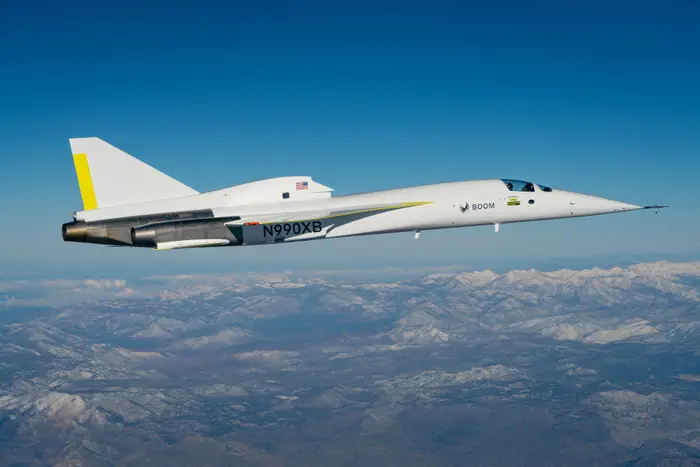Boom Supersonic’s XB-1: A Leap Towards Supersonic Travel

The aviation industry is on the brink of a significant breakthrough with Boom Supersonic’s XB-1 supersonic demonstrator. This aircraft is poised to become the first commercial plane to break the sound barrier since the iconic Concorde. On January 10, 2025, the XB-1 completed its 11th test flight, achieving a remarkable sustained speed of Mach 0.95, which translates to approximately 1,172 km/h. This milestone was accomplished at an altitude of 8,986 meters, notably lower than previous tests conducted at similar speeds. The progress made by Boom Supersonic signals a new era in air travel, where speed and efficiency could redefine long-distance journeys.
Record-Breaking Performance Under High Pressure
In its latest test, the XB-1 achieved a record equivalent airspeed of 383 knots. This performance is indicative of high dynamic air pressure, a condition that the aircraft’s frame successfully withstood. While such intense air pressure is not expected during regular operations at higher altitudes, the test results confirm the aircraft’s strength and stability under extreme conditions.
Boom Supersonic has been rigorously testing the XB-1 since March 2024, focusing on critical aspects such as stability and airframe durability. Nick Sheryka, the Chief Flight Test Engineer at Boom Supersonic, emphasized that the current test campaign aims to incrementally increase both speed and altitude. The goal is to eventually reach supersonic speeds. The XB-1’s airframe has demonstrated robust performance, ensuring controllability even in transonic conditions. This achievement is crucial for the aircraft’s future operations and sets a solid foundation for the next phases of development.
Planned Breakthroughs in 2025
Looking ahead, Boom Supersonic is optimistic about surpassing Mach 1 in early 2025. This milestone is not just a technical achievement; it represents a significant step toward the development of the Boom Overture, a supersonic passenger aircraft designed for transatlantic flights in the 2030s. The Overture aims to carry between 64 and 80 passengers, significantly reducing travel times. For example, a flight from London to Newark could take as little as 3 hours and 30 minutes.
The development of the Boom Overture follows a structured approach to supersonic innovation. The company prioritizes passenger safety while optimizing performance under real-world conditions. As the aviation industry continues to evolve, the successful implementation of the Overture could revolutionize air travel, making long-distance flights faster and more efficient than ever before.
The Future of Supersonic Travel
The advancements made by Boom Supersonic with the XB-1 are just the beginning. As the company prepares to enter the supersonic realm, it faces both challenges and opportunities. The focus on safety, performance, and passenger experience will be paramount as they move forward. The potential for supersonic travel to reshape the aviation landscape is immense. With the XB-1 paving the way, the dream of flying faster than the speed of sound could soon become a reality for commercial passengers.
As we look to the future, the aviation community watches closely. The success of the XB-1 and the anticipated launch of the Boom Overture could mark a new chapter in air travel, one defined by speed, efficiency, and innovation.
Observer Voice is the one stop site for National, International news, Sports, Editor’s Choice, Art/culture contents, Quotes and much more. We also cover historical contents. Historical contents includes World History, Indian History, and what happened today. The website also covers Entertainment across the India and World.

